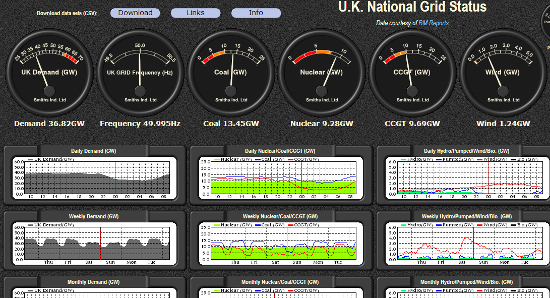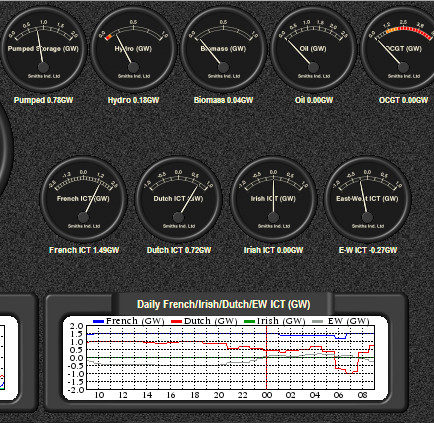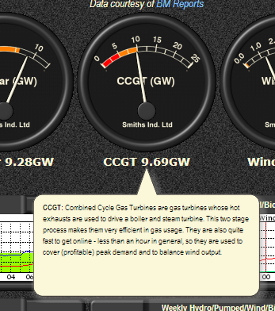Gas and electricity supply, and energy in general, are constantly in the headlines in the UK. Reports on the anti-fracking protests at Balcombe recently dominated discussions on the topic but the central issue remains. How do we meet our energy needs in the future: gas, coal, nuclear, renewables? Looking at the level of current consumption and how it is generated is key to understanding the nature of the problem. For electricity, there is detailed data available on the status of the UK National Grid and can now be viewed via a service called Gridwatch.
Gridwatch (http://www.gridwatch.templar.co.uk/index.php) shows the demand for electricity in the UK at any one time, the source and how it is being generated. The site is maintained by Templar Consultancy and uses near real-time data from BM Reports on what the UK’s electricity grid is doing. The data is updated every 5 minutes.
The data is presented as a series of dials so that you can easily see how much energy is generated and how that changes throughout the day. Most of the screen is taken up with dials for demand, coal, nuclear, CCGT (gas) and wind.
The right hand area of the screen shows how much electricity is generated through pumped hydro, hydro, biomass and oil, and the level of imported electricity.
Move your cursor over a dial for further information on the different technologies and sources of generation. Coal and nuclear power stations are always switched on and provide most of what is called the base load of electricity required throughout the day. Gas makes up the difference and covers peak demand and balances the variable output from renewables such as wind.
Not much changes during the summer months but the demand can increase dramatically during very cold weather in the winter. It is interesting to see how the dials shift as soon as people get up in the morning. Also, the amount of electricity produced via wind turbines drops to almost zero during stormy weather. The turbines are switched off in high winds to protect them from damage.
Warning: this site can be addictive, especially if you start monitoring it during late autumn and winter!
For more data and statistics on UK energy go to the Department of Energy and Climate Change (DECC) at https://www.gov.uk/government/organisations/department-of-energy-climate-change/about/statistics



One thought on “How the UK’s electricity is generated”
Comments are closed.